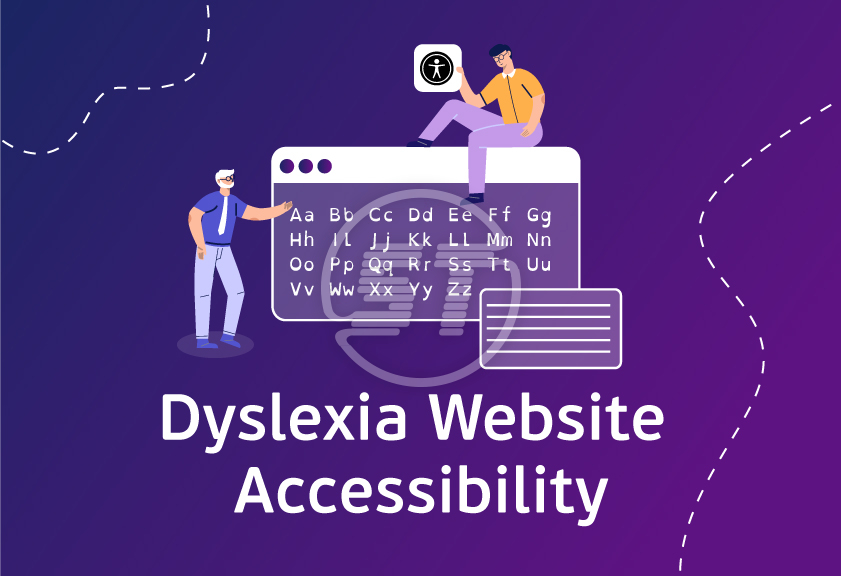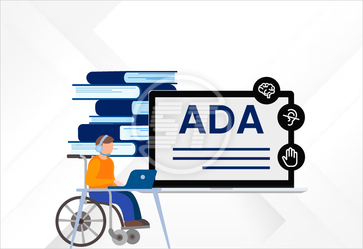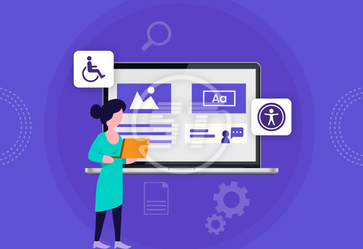Dyslexia is a neurological condition characterized by difficulties with accurate and/or fluent word recognition and by poor spelling and decoding abilities. These challenges are typically due to a deficit in the phonological component of language, which can impact reading comprehension and impede vocabulary growth. Despite these difficulties, individuals with dyslexia often have average to above-average intelligence.
It is a common learning disability, affecting approximately 10-15% of the population. It is a lifelong condition, but its impact can be mitigated with appropriate strategies and interventions. Early diagnosis and support are crucial in helping individuals with dyslexia achieve their full potential.
People with dyslexia need accessible digital spaces to fulfil their necessities. Let’s understand what all changes can make their online experience seamless.
Enhancing web accessibility for users with Dyslexia!
To support individuals with dyslexia, it is essential to create accessible environments that accommodate their unique needs.
To implement cognitive accessibility in digital assets, WCAG includes specific requirements:
- Users must get enough time to read content at their pace (success criteria 2.2.)
- Content creation should be done in a way that it can be presented in several ways via different devices and browsers without losing its main essence (success criteria 1.3).
- Web page navigation is required in predictable ways (success criteria 3.2).
- Text content should be readable and understandable (success criteria 3.1).
An organization can choose any conformance level of WCAG based on its objectives and target audience however, it is suggested to audit websites against WCAG’s Level AA success criteria. Here are some specific ways to tailor web content for users with dyslexia.
Readable fonts and text presentation
Fonts - Use dyslexia-friendly fonts such as OpenDyslexic, Arial, Verdana, Tahoma, Helvetica, or Comic Sans. These fonts have distinct letter shapes that can help reduce reading errors. All in One Accessibility includes Dyslexia fonts feature for improving readable and personalized experience!
Text size and spacing - Opt for larger text sizes and increased line spacing to enhance readability. Adequate spacing between lines, letters, and paragraphs can help decrease visual crowding.
Color contrast - Ensure high contrast between text and background. Dark text on a light background is generally easier to read. Avoid using pure white backgrounds as they can cause glare; off-white or pastel backgrounds are preferable. Use WCAG color contrast checker for more information.
Accessible digital content
Text-to-Speech (TTS) tools – Implement TTS functionality on websites and digital documents. These tools assist read text aloud, which helps users with dyslexia to process information more efficiently.
Readable layouts – Use clear and simple layouts with minimal distractions. Break text into smaller sections with headings and subheadings to improve navigability.
Interactive and multimedia content – Incorporate videos, audio files, and interactive elements to present information in various formats. This multimodal approach can aid comprehensive information in most suitable way for users with Dyslexia.
Assistive technologies
Speech recognition software – Tools like Dragon NaturallySpeaking can help individuals with dyslexia compose written content through voice input.
Phonetic spellcheckers – Specialized spellcheckers designed for dyslexia can identify and correct phonetic spelling errors more effectively than standard spellcheckers.
Audiobooks and E-books – Provide access to audiobooks and e-books, which allow users to listen to text while following along visually. This can improve reading skills and comprehension.
Educational support
Individualized Education Plans (IEPs) – Develop tailored education plans that address the specific needs of students with dyslexia. These plans should include accommodations such as extra time on tests, note-taking assistance, and modified assignments.
Specialized instruction – Implement structured literacy programs that focus on explicit, systematic instruction in phonemic awareness, phonics, fluency, vocabulary, and comprehension.
Teacher training - Educate teachers and staff about dyslexia to foster a supportive learning environment. Training should include strategies for identifying dyslexia and techniques for effective instruction.
Workplace accommodations
Flexible work arrangements – Allow flexible work hours or remote working options to reduce stress and accommodate individual needs.
Accessible communication – Use clear, concise communication and provide information in multiple formats such as, written, verbal, and visual.
Training and awareness – Promote awareness and understanding of dyslexia in the workplace to create an inclusive environment. Offer training sessions to educate employees about dyslexia and the available support tools.
WCAG standards are essential to improve online experiences for users with Dyslexia!
Dyslexia impacts people’s lives in myriad ways and to help them with an optimal online experience, organizations should follow suggested accessibility standards. Moreover, accessibility maintenance is another crucial facet that must go on without any interruption. Testing web pages against the latest technology and standards to ensure fewer performance issues is mandatory to retain web accessibility status.
It is important to note that not all users with dyslexia have similar symptoms and their level of understanding also vary. However, mostly web solutions are made to mitigate possible discomforts for any user by focusing on reducing cognitive effort either via visual or any other type of stimulus.
A consistent experience results in enhanced web traffic, search engine performance, and overall business growth!
Skynet Technologies is a leading provider of comprehensive digital solutions for enterprises, and their commitment to website accessibility aligns with their ethos of inclusivity and innovation. By prioritizing WCAG compliance, we ensure that enterprise websites are accessible to all users, including those with disabilities. We recognize the significance of adhering to WCAG guidelines, not just for legal compliance but also for enhancing user experience. Their approach to enterprise website accessibility involves thorough audit, strategic planning, website accessibility remediation, consulting, document remediation, VPAT, self-assistance training, ongoing monitoring, and support that cater to diverse user needs. Request a quote or reach out [email protected].


